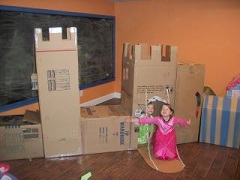Traditional office spaces and rentals can be expensive and inflexible, leading many small business owners to search for more practical alternatives. One creative solution gaining popularity is turning a storage unit into a workspace. It’s an affordable, flexible, and secure way to operate without the high price tag of conventional office spaces.
With today’s need for adaptability and cost savings, more entrepreneurs are customizing storage units to fit their work needs. It reflects a growing trend toward affordable options and budget-conscious work environments.
What Are the Typical Uses of a Storage Unit?
Storage units aren’t just for storing seasonal personal items or old furniture—they serve a wide variety of purposes for both individuals and businesses. Here are some common ways people use storage units:
- Home Decluttering: If your closets are overflowing or your garage is packed, a storage unit can help you declutter without forcing you to part with things you may want later.
- Business Inventory: Small business operations often run out of inventory space. A storage unit can be a budget-friendly solution for keeping stock organized and accessible without crowding your storefront or workspace.
- Vehicle Storage: Larger storage units can safely house vehicles, whether it’s a delivery van, a car undergoing repairs, or a personal vehicle that’s not currently in use.
- Tools and Equipment: Many contractors, landscapers, and mechanics rely on storage units to keep their tools and gear safe when they’re not on the job. If the tools are sensitive to heat or moisture, climate-controlled units help protect them from damage.
- Moving and Relocation: If you’re in the middle of a move, whether it’s for your home or your business, a storage unit can be a real lifesaver. It gives you a place to keep your stuff while you figure out the next steps without feeling rushed. Everything stays organized and easy to access until you’re ready to settle in.
- Student Storage: College students use storage units during summer breaks or study abroad trips to store their belongings. This helps them avoid the hassle of moving everything back home.
Can I Use a Storage Unit as an Office?
Yes, you can. Many businesses and entrepreneurs are now setting up offices in storage units. When customized properly, these storage spaces can function just like small office spaces, minus the expensive rent.
Benefits of Turning a Storage Unit Into an Office
Lower Costs
Self-storage units are far more cost-effective options than actual office spaces, making them a great option for startups or solo business owners looking to reduce monthly expenses.
Greater Flexibility
Whether you need to upgrade, downsize, or relocate, storage units offer flexible lease terms that allow your workspace to change as your business evolves. This adaptability is perfect for growing businesses.
Convenient Locations
Since business storage facilities are often found near busy commercial spaces and foot traffic, they’re easy to reach, both for you and your clients. That kind of location can make your daily routine a lot smoother.
Custom Workspace
You can organize the unit however you want. Add desks, cabinets, shelves, and your decorations to make a workspace that fits your needs.
Security
Modern business storage facilities often feature top-notch security with 24/7 surveillance, gated access, and personal locks, making sure that your sensitive documents and equipment are well-protected at all times.
Fewer Distractions
If working from home or in a noisy coworking space makes it hard to concentrate, a quiet storage unit can give you the peace you need to stay focused and get things done.
Types of Storage Units That Can be Turned Into Offices
Not every storage unit is suitable for turning into an office, so it’s important to choose the right one. Here are some types offered by storage companies that are particularly well-suited for creating a functional workspace:
Climate-Controlled Units
These are ideal for anyone planning to spend significant time inside the unit. Climate control keeps the temperature stable, protecting both your equipment and your comfort. It’s especially important if you’re storing electronics, paper files, or anything sensitive to humidity or extreme heat.
Drive-Up Storage Units
Drive-up access provides a simple way to load and unload supplies, tools, or valuable inventory. Although they may not have climate control, these units are a great option for businesses that don’t require temperature regulation. They’re also perfect for those who need to come and go quickly.
Interior Units With Electrical Access
Some storage facilities offer units with electrical outlets and lighting already installed, or will allow you to install them. These are excellent choices for setting up a real working office with computers, lamps, printers, and other electronics.
Converted Office/Storage Hybrid Units
A few modern storage facilities now offer units specifically designed to double as small offices. These spaces may include lighting, Wi-Fi access, and even private entrances, giving you the feel of a real office without the hefty lease.
Large Size Units
If you require extra space for more than just a desk—like product storage, excess inventory, or even room for client meetings, a larger unit might be the way to go. It provides greater flexibility in how you set up and organize your workspace.
How to Use a Storage Unit as an Office
Step 1: Review the Rules
Before you start moving furniture or office equipment, it’s essential to talk with the facility manager. Not all storage facilities allow their units to be used as offices, and some may have specific policies about modifications, hours of use, or business activities.
If needed, get written permission and clarify any restrictions—like noise levels, internet installation, or use of electrical equipment—so you stay compliant and avoid potential issues later.
Step 2: Determine Your Space Requirements
Consider the type of business you’ll be doing in the unit. Will you only need ample space for a desk and laptop, or are you storing inventory, tools, or packaging materials as well? Take measurements and plan accordingly.
A 5×10 storage unit size might be enough for a simple setup, while a 10×20 could accommodate shelving, seating, and storage. Think about future needs, too—if your business grows, will the unit still provide a productive workspace?
Step 3: Plan for Utilities
Some facilities offer electricity and climate control, but not all do. If you need to plug in a laptop, printer, or lighting, make sure outlets are available. If the space isn’t climate-controlled, it may get too hot or cold depending on the season, potentially damaging electronics or making work uncomfortable.
You may also want to ask about options for installing Wi-Fi or using mobile hotspots if internet access is important to your daily tasks.
Step 4: Design Your Layout
Set up your workspace to help you focus and get things done. Start with the basics—a sturdy desk, a comfy chair, and good lighting. Then, add shelves or drawers to keep your things organized.
Use the walls to store things and keep the floor clear. You can add a small rug, lamp, or bulletin board to make the space feel warmer. If you’re meeting clients, add a couple of chairs and keep the area neat and professional.
Step 5: Enhance Security
While most storage facilities offer basic 24-hour security measures like gated access or video surveillance, it’s wise to add layers of protection. Use heavy-duty locks, especially if your unit contains valuable equipment or confidential information. Lockable cabinets, safes, and password-protected devices can help safeguard sensitive materials.
Ask the facility if additional features like individual unit alarms are available.
Step 6: Make It Feel Like a Real Office
A bland, windowless box isn’t exactly inspiring—but with a little effort, you can transform the space into something more comfortable. Bring in items that reflect your personality or brand: framed art, a small plant, motivational quotes, or company logos.
Use warm lighting instead of harsh fluorescents and keep some creature comforts nearby, like a mini fan, coffee maker, or Bluetooth speaker for background music. A pleasant environment boosts morale and helps you stay motivated.
Common Questions Answered
Can I Use the Unit’s Address for My Business?
Some storage facilities may offer mailbox or virtual office services, but most won’t allow their address to be used as your official business location. For this purpose, consider a virtual business address provider.
Can I Use a Storage Unit as an Art Studio?
Yes, many artists find storage units to be a great option for creative work. Climate-controlled units are especially helpful for protecting artwork from temperature changes. Good lighting and proper ventilation can turn your unit into a productive studio space.
Can I Sleep in a Storage Unit?
The answer is no. Living or sleeping in a storage unit is unsafe and against facility rules. Storage units aren’t equipped with restrooms, running water, or proper ventilation for overnight stays.
Can I Hang Items on the Walls?
It depends on the facility’s rules. Some may allow you to hang lightweight items using non-damaging adhesive hooks. If you’re unsure, portable shelving or display stands are a good alternative.
Need a Budget-Friendly Office? Think Inside the Box With Box-n-Go Storage Options!
Using a storage unit as an office is a practical and budget-friendly option for small business owners dealing with high costs and limited space. It lets you create a workspace that fits your needs without spending too much.
At Box-n-Go, we understand how important it is for businesses to have flexibility and convenience. Our storage locations are easy to access, and we offer rental terms that can be adjusted to suit your requirements. Our storage experts aim to provide excellent service and be your reliable storage solution.
Make your workspace better with Box-n-Go. Get in touch with us today to find out how we can support your business.





